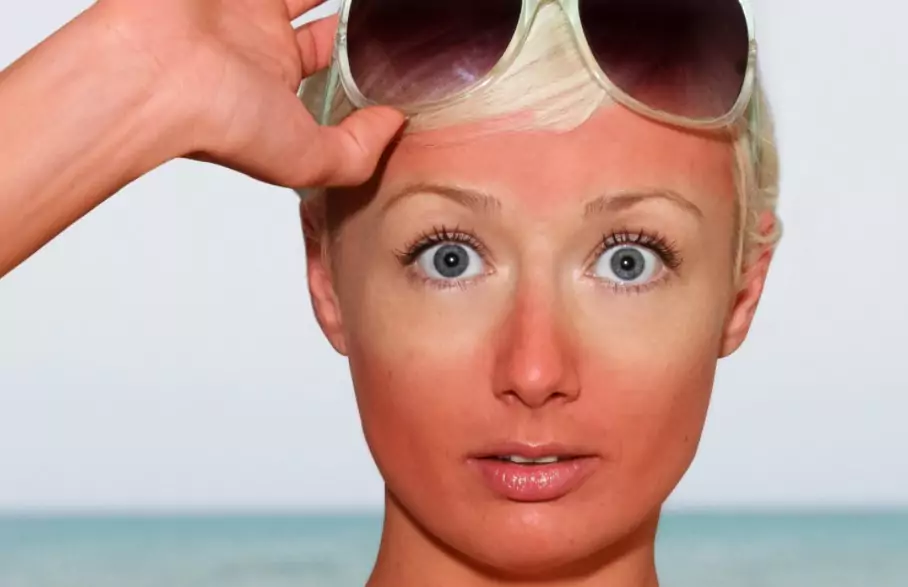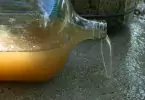No matter, how well prepared you are for that trip to the beach, the mountains or for the backyard barbecue, sunburns happen when you least expect it. It is truly annoying to have to stay behind inside because of an annoying sunburn you got yesterday. Not only are sunburns really damaging to your skin and quite dangerous if you get them often – but learning how to get rid of sunburn might help you out. To start with, you obviously have to use sunscreen. Unfortunately, in some parts of the world, this is not enough.
If you do get sunburned, there are steps you can take to speed up recovery time, to help your skin heal properly and quickly and to avoid getting them again. In this article, we collected an array of information to help you learn how to treat a sunburn but also, how to get rid of sunburns as quickly as possible.

You will learn more how sunburn happens, about different remedies, when it is absolutely necessary to visit a doctor and what are some other conditions that can accompany sunburns. So, sit back, relax and get ready to learn!
What Is Sunburn?
A sunburn is actually a form of radiation burn that happens because of exposure to UVA and UVB rays. Common symptoms in humans and also animals include red or reddish skin that is sensitive to the touch, some swelling, pain, mild dizziness and general fatigue.
In worst cases, blisters of different sizes can appear. Excessive exposure can lead to serious skin conditions such as skin cancer.
The Various Degrees Of Sunburn
In the world of skin burns, we know of 3 degrees. Signs that point towards a 1st-degree burn are redness, swelling and pain. 2nd-degree burns can cause red, splotchy or white skin, swelling, pain and blisters.
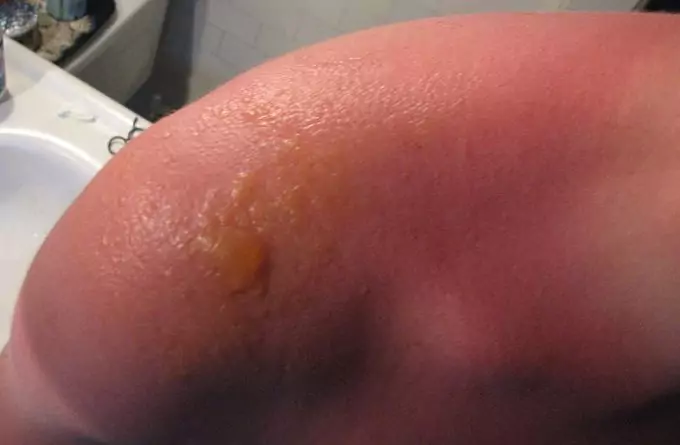
If blisters are smaller than 3 inches (7.6 cm) you can treat is as minor burn without medical attention. If blisters are bigger or are covering bigger parts of your body, you need to seek medical help.
3rd degree burns rarely happen from sun exposure. They include layers of skin being burned off, together with layers of fat under the skin. These are obviously very serious and need immediate medical attention. The important information to know is that you need medical help if your blisters are bigger than 3 inches.
Time Frame of Sunburn
The sunburn can develop in as little as 15 minutes of the exposure. After the exposure, the skin might already start turning red in no less than 30 minutes; however, it usually takes between 2 and 6 hours for the redness and maybe some swelling to develop.

The pain associated with it is the strongest in 6 to 48 hours after exposure. The burn can continue to develop for 1 up to 3 days, sometimes followed by peeling for 3 to 8 days. Itching and more peeling can be present for several weeks.
Act Fast!
In cases of sunburn, the most important of getting rid of them quickly is to act fast. As soon as you start feeling some discomfort, itchiness or when you see the red and swollen skin on your body – retreat from the sun and start with remedies.
Remove any clothing that is obstructing the area and replace it with loose cotton clothing that can breathe well. Next, you can see what remedies to consider. Use the one that is the most accessible to you at the moment and work your way from there. Sunburned skin is basically dehydrated, so you need to apply moisture as fast as possible, in a gentle way.
First-Aid Remedies
Here are some remedies you can use right away!
Cool Bath
First, you can take a nice bath. However – avoid any soap, bath salts or any other product usually used when taking a bath – they might irritate the skin. You are doing this to apply large quantities of water to affected areas.
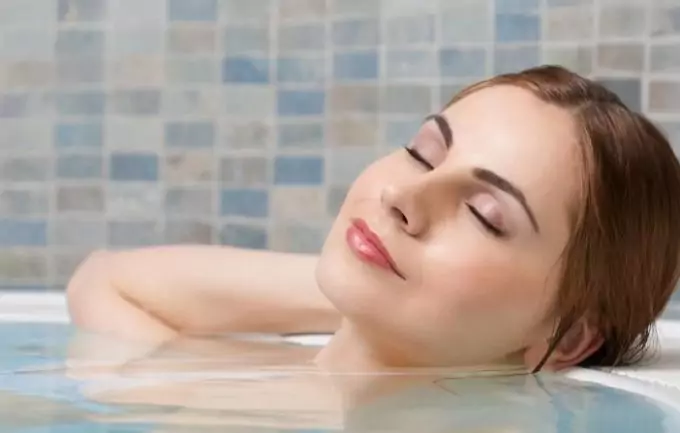
The temperature should be comfortable but not hot or too warm – it’s better to have it a bit colder. If it is summer then you won’t mind a nice refreshing bath. Make sure not to press affected areas against the bathtub.
Cool Wet Compress
You can apply a cold, wet compress in a form of a small towel that you rinsed under cold water to the affected areas. Hold it and gently press on the sunburn, making sure you avoid rubbing it or causing any additional stress. If you want to get rid of the sunburn quickly, you need to treat affected skin with great care.
When the sunburn warms up the towel, replace it with a fresh wet one and place this one in the fridge or even freezer (but not for very long). You can use a cold compress for max 20-30 minutes at the time. Have breaks of about 15-30 minutes before you start with the next round of compresses.
Pain Relievers
If the pain is getting too much for you to handle, you can consider taking a mild over the counter pain reliever. Some will also help with the swelling if you are experiencing any.
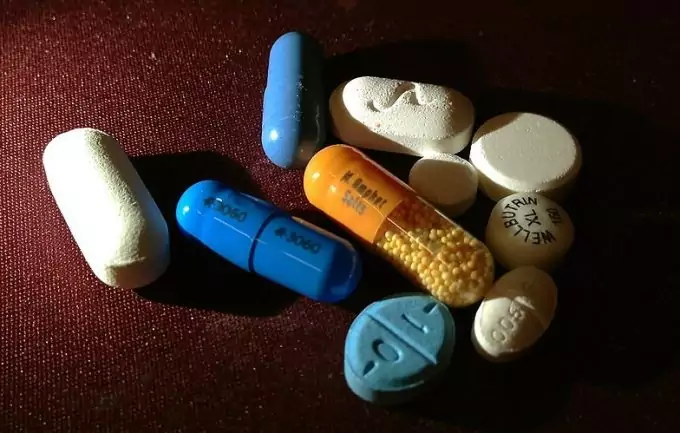
There are also over the counter sprays available to help treat the sunburns but they could be too harsh for the affected skin. If you want to use those, make sure to read the label carefully, checking for ingredients you might be allergic to. These sprays are not appropriate for children under the age of 2.
Hydration
Granted – you need to rehydrate affected skin. However, don’t forget you should do that from the inside as well. Make sure to drink plenty of water and other liquids (no alcohol!) to replace those lost. If you feel weak you might be dehydrated or even have a heat stroke (more about that lower in the article), so proceed accordingly.
Other Home Remedies
Apart from the most obvious ways to rehydrate the skin and relieve pain and swelling. There are a lot of other ways you can help your skin heal faster.
Yoghurt
Sounds terrible but it isn’t. This was the remedy all the moms at the summer camping by the sea used when I was a kid. You need to apply generous amounts of traditional, classic yoghurt – no flavouring, no sugar added, preferably organic.
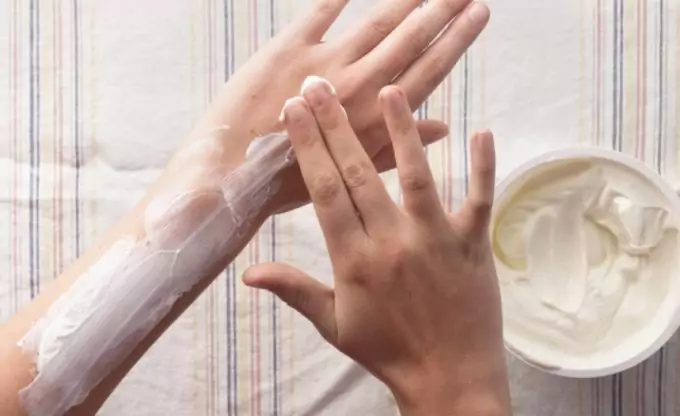
Image credit: iamnaturalmagazine.com
As kids, we usually got sunburns on shoulders, so you had to sit down while the yoghurt did its magic. It smelled horrible but the coldness helped relieve some itchiness and pain, at it seemed like the skin absorbed moisture from the yoghurt and consequently healed faster.
Aloe Vera
This is another really good way of applying generous amounts of moisture to affected areas. Apply generously on affected areas and repeat every couple of hours. A clear film will appear when the aloe vera dries out. You can moisten it with a cold compress or a few sprays of water. You can also leave it as is and just apply a fresh layer in an hour or so.
Freshly Brewed Tea
After the tea has cooled down you can apply it to the affected area with a clean cloth. The tannic acid in the black tea is supposed to draw heat from the sunburn while also helping with restoring the pH balance of the skin. You can add some mint to the tea when brewing it to add more cooling effect.
Witch Hazel
Witch hazel is known for soothing inflammation, so it can help with the sunburn as well.

Make sure to be careful as some witch hazel products contain alcohol, which can be irritating to the affected area. Lucky for you, there are many products on the market that are safe to use on sunburns as well.
Calendula Ointment
You can find it in natural pharmacies and apothecaries, where you can also talk to the proprietor about the use of this magical ointment. I personally use it for all kind of injuries on my skin, including helping it heal after excessive sun exposure.
It is oily and rich, so it will rehydrate the skin and help speed up the healing process. Make sure to stick to organic sources and those you trust – don’t just buy it at the side of the road off a sketchy old dude.
Food Rich In Antioxidants And Vitamin C
As with drinking enough water, you can help the healing process of your skin with the type of food you eat as well.

We suggest you stick to foods rich in antioxidant and vitamin C, such as tomatoes, cherries and blueberries. Drink homemade lemonade and help your skin heal from the inside.
Coconut Oil as a Moisturizer
After your skin is no longer super agitated and has calmed down a bit, you can use coconut oil as a moisturizer. However, don’t use it as a sunscreen! You will just worsen the situation if you do so. As a moisturizer, coconut oil helps retain moisture in the skin and in this way, speeds up the healing process.
Blister Treatment
All of the above-mentioned remedies are a good solution if you have very small blisters (not bigger than a fingernail) or if you are suffering from 1st degree burns only. If you have bigger blisters, you need use all these methods, especially the ointments very gently and carefully to avoid injuring the blisters.
Blisters develop to protect the area from infection and helps heal the area quicker. If the blister appeared in the first place, it means the damage was so severe that this is how your body, the skin reacted to it. As we said before, if the blister is wider than 3 inches, seek medical help.
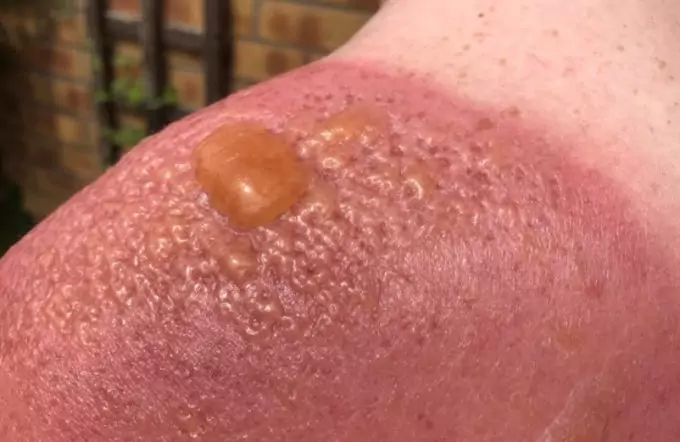
You have to leave it intact and if it is in an area that would require that – protect it with a clean dressing. If it comes to infection, you can use antibiotic ointment. The doctor will give you further instruction, but the most important part is you don’t pop it.
When to Seek Help for Blisters & Burns
The blister can get infected. The signs this might be happening are:
- Red streaks away from the blister
- Drainage of pus from the blister
- Pain, swelling, redness and warmth around the blisters
- Swollen lymph nodes in neck, armpit or groin
- Fever
If any of these signs appear, you need to visit a doctor and he will prescribe you with an appropriate medication, help and treatment.
Need Medical Attention?
Sunburn is not affecting just your skin, but your whole body. If you start feeling too weak to even stand, are confused and can’t think clearly or you feel you will pass out, you need – you guessed it – go see a doctor. Make sure somebody is coming with you, as you are not able nor should you be by yourself right now.
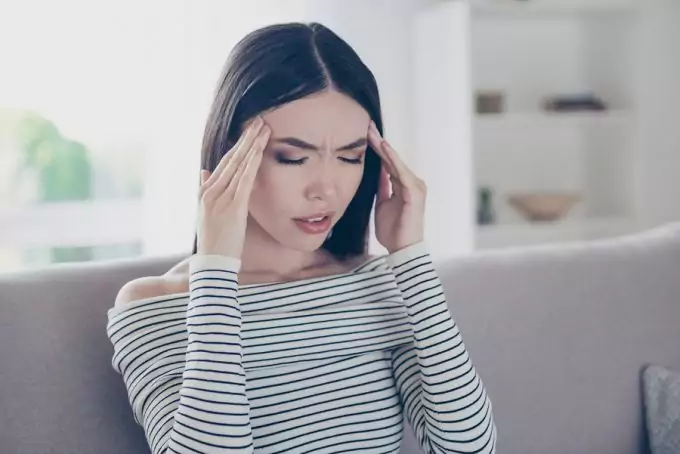
Sunburn can also be accompanied by either heatstroke or dehydration. Below you can see a list of symptoms associated with these two conditions. If you experience any of them, you need to see a doctor.
- Weakness
- Dizziness or feeling faint
- Rapid pulse and/or rapid breathing
- Pain that doesn’t respond to pain relievers or a strong headache
- No urine output, sunken eyes and/or extreme thirst
- Clammy, pale or cool skin
- Fever, rash, nausea or chills
- Eyes sensitive to light and hurt
- Severe blisters that hurt a lot, especially those wider than 1/2 inch (1.25 cm)
- Diarrhoea or vomiting
Prevent Re-Exposure
The worst thing you can do for yourself at this painful time is to go back out on the sun. You have to avoid the sun if possible stay inside in a cooled area. Even when your skin is almost healed already, you need to protect it from the sun as it is still very sensitive.
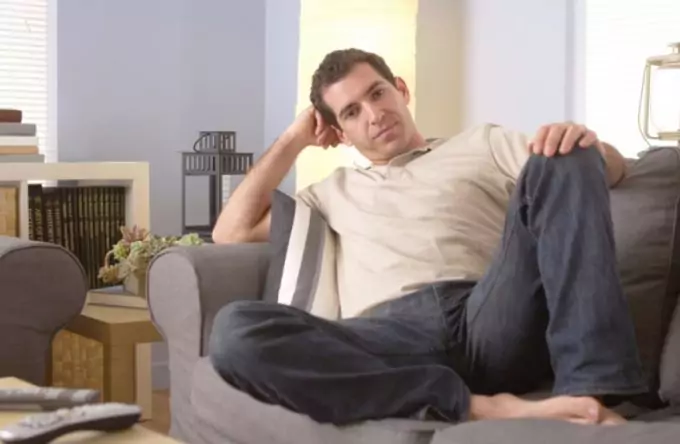
Some of the simplest steps you can do to avoid exposure are:
- Minimize time out on the sun. Stick to early hours of the day and late afternoon.
- Wear sunscreen, loose-fitting cotton clothing that breathes well and maybe carry an umbrella when walking around the town.
- Drink plenty of water.
- Generously apply moisturizer when blisters start to heal.
Wrapping Up
As you can see, there are varied remedies and steps you can take if you do get sunburn. Choose the one that is the most realistic at that moment for you and your circumstances. Do your best to prevent sunburns from even happening, and if you do get them, we believe you now have enough information to proceed accordingly.
If you feel like we missed a really good remedy to help you get rid of sunburn and heal it quickly, let us know in the comments!

